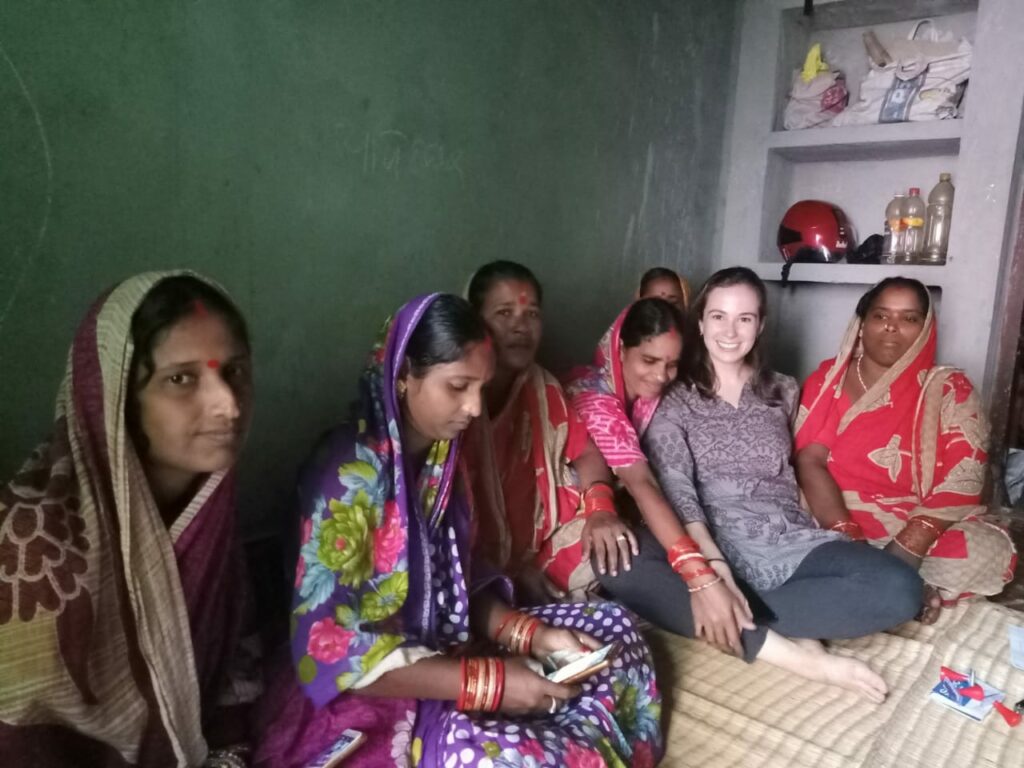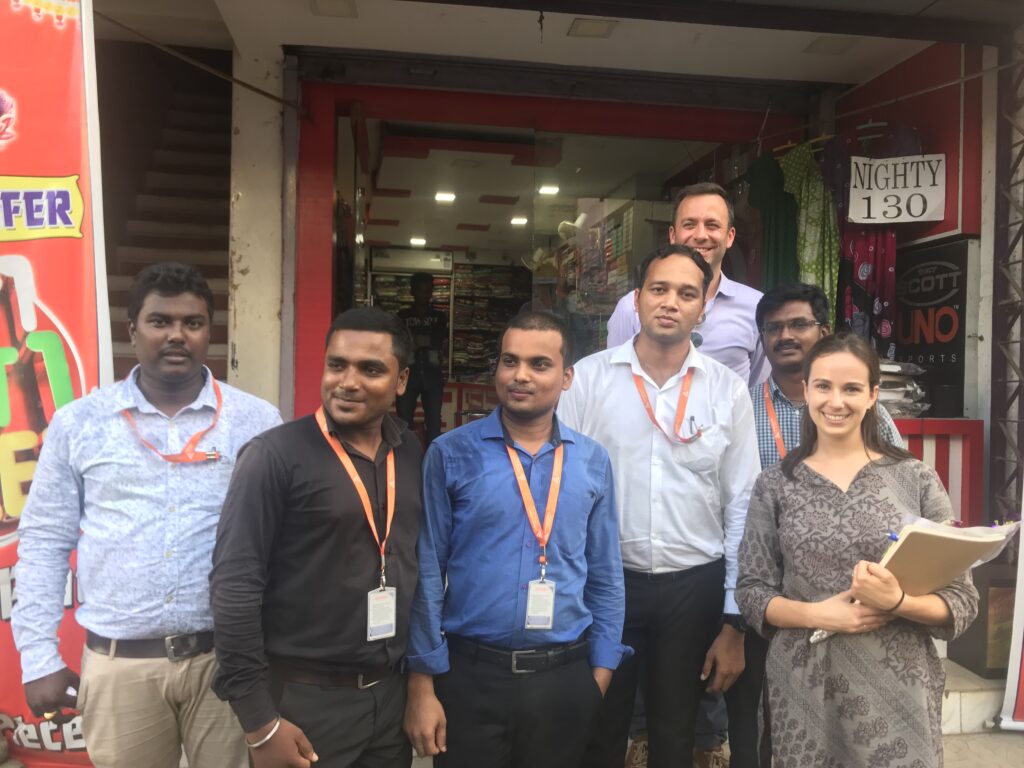As an Investment Officer, Kristy conducts investment analysis, transaction execution, and relationship monitoring, primarily for MicroVest’s South and Southeast Asia portfolio. Here, she talks about her experience managing her designated portfolio companies during COVID-19, as well as well as her hopes for the microfinance and impact investing industries going forward.

How did you first become interested in impact investing?
Out of college, I was working in the capital markets division of an investment bank and felt unfulfilled with the lack of social impact in my work. I began exploring ways to combine social good with the financial skillset I had built and started learning more about impact investing. I ended up taking on an investment fellowship at an impact venture capital company in Bangalore, India for six months. During that time, I became very immersed in a country and culture where MicroVest actively invests today.
You’ve worked your way up through several roles at MicroVest, starting as a Portfolio Analyst and now as an Investment Officer. What has the transition process been like and how have you navigated your role during a global pandemic?
As a Portfolio Analyst, I spent a lot of time processing data and working with companies to ensure they maintained compliance with our loan agreements. Very early on, I benefitted from supporting our existing Investment Officers in due diligence and over time, that evolved into managing new opportunities, generating new transactions, and working on renewals of portfolio companies we want to keep supporting. With COVID-19, there are new layers that come with portfolio management. During the first six months of the pandemic, we were in full-on support mode and had to ensure that our portfolio companies had the financial capabilities to weather an unpredictable storm. This involved more frequent communications with our portfolio companies beyond what we do in the ordinary course of business. Pre-COVID-19, we would have had most of these interactions face-to-face, but we quickly learned how to have those in-depth conversations on the phone or online. While this allowed us to continue operating and appropriately manage risk, it was a sensitive time for many people, and we were mindful that many individuals at our portfolio companies were personally impacted by COVID-19.
Have you gleaned any new insights or appreciation for your role while working with these portfolio companies?
You get a lot of first-hand exposure to individuals who are incredibly driven and motivated to see their companies succeed and have impact in the work they do—similar to how we feel about our work here at MicroVest. It’s also exciting to meet end borrowers and see how empowered they are to expand their businesses and invest in their families’ futures. Many of the women end borrowers I have met have shown that they can advocate for themselves and push financial institutions to provide the products and services that fit their needs, like insurance and project-specific loan products.

Microfinance has done much to catalyze financial inclusion for the underbanked worldwide, but not all of the impact is always positive. How does your team ensure that the institutions you’re investing in are operating responsibly and ethically?
Broadly speaking, microfinance institutions always have some level of impact assuming they are meeting an unmet financing need —what counts is whether it’s positive or negative impact. At MicroVest, we have stopgaps throughout our deal sourcing and due diligence processes to ensure that we’re investing in those companies that are actively working to generate an optimal balance of positive impact and sustainable business practices. For example, we heavily assess whether a portfolio company’s management cares about and mitigates against overindebtedness of end borrowers.
In several jurisdictions, there are limits set by the regulator that an individual or small business can’t exceed a certain level of indebtedness relative to the money that is coming in every month. In other places, there are loose or no government regulations to that effect, and that gives microfinance institutions and non-banks all the power to over-extend debt to individuals who aren’t prepared to take it on and don’t know what they’re getting themselves into. In that sense, just measuring the loan volume doesn’t automatically equate to positive impact. This really hits home the term Responsible Finance Institutions, that we use for our portfolio companies at MicroVest. Sometimes, we can immediately assess impact based on the purpose of the loan. For example, one of our portfolio companies is an institution whose license requires that all loans be extended for productive purposes. In that case, we have 100% certainty that they are assessing the borrower based on why they need that loan and whether it will help them generate the income necessary to repay the debt while growing or improving their business. There are other places and other licenses where that is not required. Consumer loans are a good example. That can be a tricky situation, because you can argue that, if a microfinance borrower is buying a TV or washing machine, that’s a consumer loan. At the same time, that money allows people to have the goods that you and I have in our homes that make it easier for us to focus on our own interests, whether those are business or personal. In these circumstances, we may need to take a deeper dive to assess the true impact of those loans.
If Microfinance Investment Vehicles (MIVs) like MicroVest were to achieve their social impact purpose, what would we be seeing?
When looking at what we do, I think the ultimate end goal is a world where there is universal access to finance. There’s no more missing middle, and it’s a world where, if someone needs to get a medical procedure or send their kids to school, the lack of formal (and fair) financing options isn’t a barrier. As the companies we invest in continue to reach more people who are excluded from the formal financial system, those borrowers build a payment history and start becoming scorable by more standard credit algorithms. When that happens, a lot of these microfinance borrowers have credit scores that makes banks more interested in banking those people – so they start to have access to more financial products and larger loan sizes. One trend we have observed is that microfinance institutions who started out offering traditional group or individual micro-loans have begun to evolve into multi-product SME Finance Institutions in order to meet the growing needs of their longstanding clients.
What are some of the biggest challenges facing the impact investing industry today?
A constant challenge within the space is the best way to measure impact. It is easy to make assumptions about outcomes based on outputs that aren’t necessarily correlated with ultimate impact. For example, SME finance is very broad and means different things in different countries. The “missing middle” financing gap varies country-to-country, which is one reason we see average loan sizes for our portfolio companies in Mexico much higher than similar companies in Panama or Peru. What we can do is create and incorporate unified metrics, which have come in various forms in the past. That’s usually a good starting point and helps us focus on trends or highlight outliers that need more investigation. This also gives our industry more credibility among investors who really want to understand and report the impact of their capital alongside financial returns. MicroVest adopted the Cerise SPI4 Questionnaire in 2019 for our core social impact reporting, which is a compulsory component of our underwriting process today. The questionnaire assesses companies’ monitoring and commitment to social goals, client and employee treatment, and green initiatives. Our investment and business development team are regularly considering additional ways we may better assess social impact.